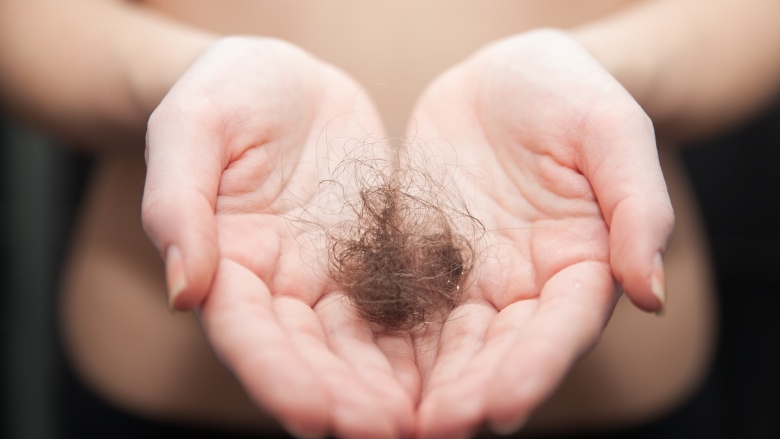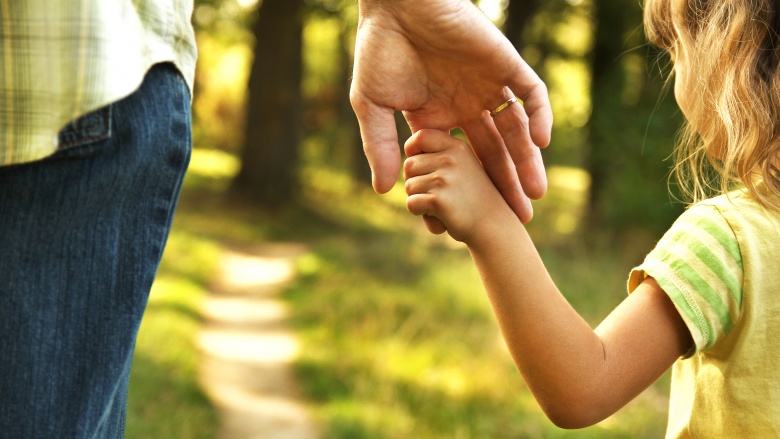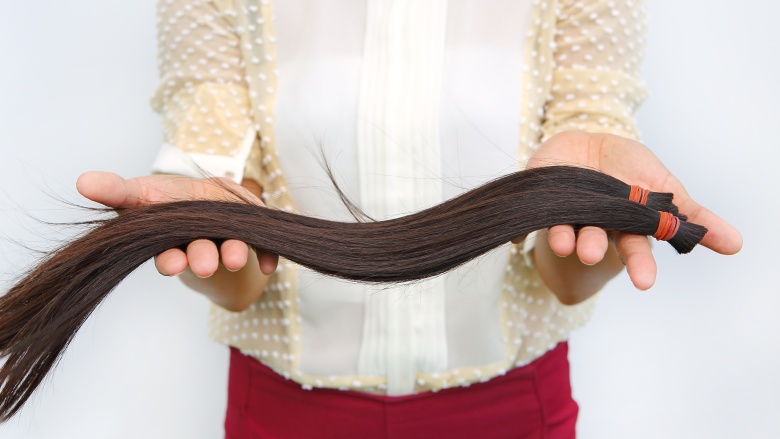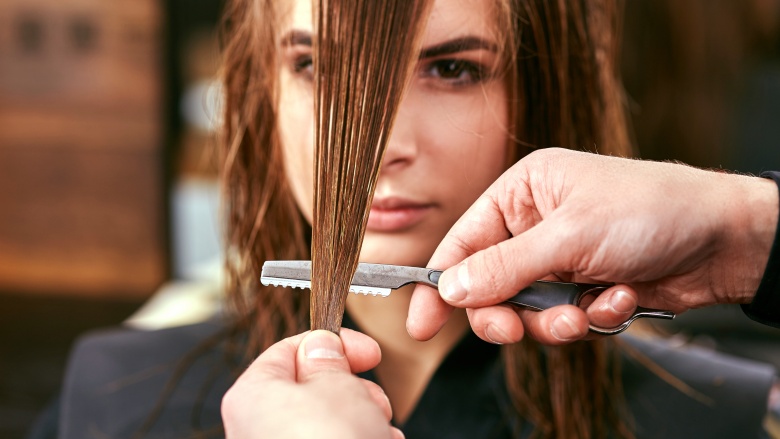The Truth About Donating Your Hair
Think back to middle school for a moment. Sure, there are some happy memories, but there are also some cringe-worthy ones. Acne, braces, bad hair? You name it, we've all had it.
Now imagine going through all those awkward years with no hair. Yep, that perm isn't looking too bad now, is it?
Sadly, there are kids all over the world losing their hair from chronic conditions or medical treatments. The good news is that any of us could help. One way to make a huge difference in a child's life is to donate your own hair to be used for a custom wig.
These wigs are usually given to children in need for free and can be one small way for them to start to feel normal again. If you've been considering donating your hair, read on. There are plenty of options out there, so I've done a little research to help you get informed.
Why donate?
Only you can know if hair donation is the right choice for you. If you decide to go for it, your donation will be used to make a wig for a child in need. These children are usually not only dealing with the seriousness of their illness and treatments, but also just trying to fit in with their friends again. Having natural-looking hair goes a long way in helping a child feel like themself again.
Wigs made from a quality organization are incredibly labor-intensive and handmade to ensure that it looks just like the child's real hair. The wig is specially made for the child and fits to their head.
Causes of hair loss
Unfortunately, there are multiple reasons why a child could lose his or her hair. Many cancer treatments, like chemo or radiation, can cause hair loss. Children typically start losing their hair a few weeks into treatment. The most common childhood cancers are leukemias, brain tumors, neuroblastoma, Wilms tumor, and lymphomas. A lesser known cause of childhood hair loss is alopecia, which is an immune system disorder. The child's body attacks the hair follicles (much like it would a virus), causing the hair to fall out in large patches.
But it's not all bad news
The good news is that any of us have the chance to help these kids. The Children's Cancer Research Fund has stated that 80 percent of childhood cancers can be cured or treated successfully. By donating your hair, money, or time, you will be doing something to help a sick child start to feel like a regular kid again.
Do your homework
When I first started learning about hair donation, I only knew about Locks of Love, but there are plenty of options out there. As a nurse, I have had the privilege of caring for children with cancer and have been truly amazed at what a difference these wigs can make not only to their self-confidence, but their entire outlook on life. When you look like yourself again, maybe you can start feeling like yourself again.
First decide if you'd like your hair donated to children or women in need. Look into the requirements. The length of the ponytail usually needs to be somewhere between 8 and 12 inches. Some organizations accept gray and dyed hair, while others do not.
Now this next point will most likely make you nauseous, but another important reason to do your homework is fraud. Yes, there are some people out there so desperate or sad or simply despicable that they will ask for monetary donations for these wigs, but keep it for themselves. The Locks of Love website warns that this has been happening more and more, so if you choose to donate cash, always mail it directly to the organization. Check their website for the correct address. If you are asked for a check on Facebook or by email, politely decline and go directly to the organization.
It's not just for kids
Adults certainly suffer hair loss as well, both from cancer treatments and alopecia. Some organizations work specifically with women battling hair loss. Pantene provides wigs to women going through cancer treatments. They ask for 8 inches of hair or an $8 donation.
Care for your hair
Once you've decided to donate your hair, make sure it's in the best shape possible. Don't color it or have any chemical treatments done. Try to avoid too much blow drying and heat styling as well.
Now is also the time to make a plan for after the cut. Ditching almost a foot of hair is a big change, so avoid that post-haircut depression with a fun new style. Look online or make a Pinterest board of your favorite bobs.
Come prepared
Before heading to the salon, make sure you read your organization's requirements carefully. Each one is a little different, so you don't want a small detail keeping you from making your donation. Most organizations state that you can have your hair cut by any salon or hair stylist, but double-check that as well.
Generally speaking, the hair must be dry and clean before going in the ziploc bag. If your hair has been treated with any chemicals or coloring agents, you'll most likely have to wait to donate until that grows out. Dreadlocks also won't work.
Locks of Love and Wigs for Kids require at least 10 inches of hair. Wigs 4 Kids and Children with Hair Loss require only 8 inches of hair.
At the salon
When you arrive on the big day, talk with your stylist about the donation. They have probably dealt with this before, so they will most likely be excited to be involved in such a happy day.
Make sure to show them the hair donation form. This will have all the details like how long the hair should be, how to arrange it (ponytail, braid, etc.), and how to send it.
Most organizations ask that the hair is kept in a clean ponytail and braid with a rubberband on both ends. Some will accept gray hair, but check first. The ponytail should be placed in a large ziplock bag with the hair donation form.
Wanna go again?
Once you take the plunge and chop of that ponytail, you may feel the urge to grow it out and go again. Go for it! According to Wigs for Kids, each wig takes 20 to 30 ponytails to complete, so there is always a need.
Feeling a little sad without your long, luscious locks? There's no shame in that! Check Youtube or charity websites for videos of children receiving their wigs for the first time. Grab a box a tissues and get ready to feel awesome about your decision to donate.
Not ready to cut?
Feeling inspired, but not ready to donate a foot of hair? There are plenty of ways to get involved. Once you find an organization you feel a connection to, consider making a donation or asking friends and family to join you in donating.
Wigs for Kids is a nonprofit that estimates each wig costs $1,800 to create! These wigs are given to children in need for free, so these organizations always appreciate cash donations as well.
For a more personal connection, some organizations will match you up with a specific child to sponsor. You won't actually meet the family, but you'll know that every dollar you donate is going to that little person. Also, you'll find that you don't have to know someone to feel that connection.











